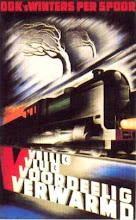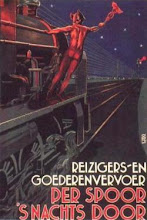

These rainy evenings are good for building the All Nation Line kit of the box trailer car. I read the instructions and the hints of other wooden kit builders on the web and decided to build the undercarriage first. So I started with cutting the wood of the undercarriage and glue the bolsters in place. Then I formed the end filler blocks and glued them on. Then the queen posts and brake cilinder were glued on with epoxy glue. I followed Dan's advise and did not use the brass wire for the truss rods but used Nylon 0,5 mm wire instead, which I glued to the backside with epoxy. Then the turnbuckles were glued on the centre of the wires.
Then it was time to turn the car around and assemble the top parts. Since the undercarriage width was about 3 mm short of what the drawings indicated that it should be and also compared to the size of the other parts, I decided to glue 1.5 mm wooden spacers between the undercarriage and the scribed wooden side panels. The same was done with the blocks on the front and back side of the car. Well, I am happy that it starts to look like a train car now.
The level of the brake rigging and the door handles is not very high and I thinking about fiddling around with some paper and wood to scratch build that a bit better. Then the question is, how did the brake system of such a interurban freight car look like?








